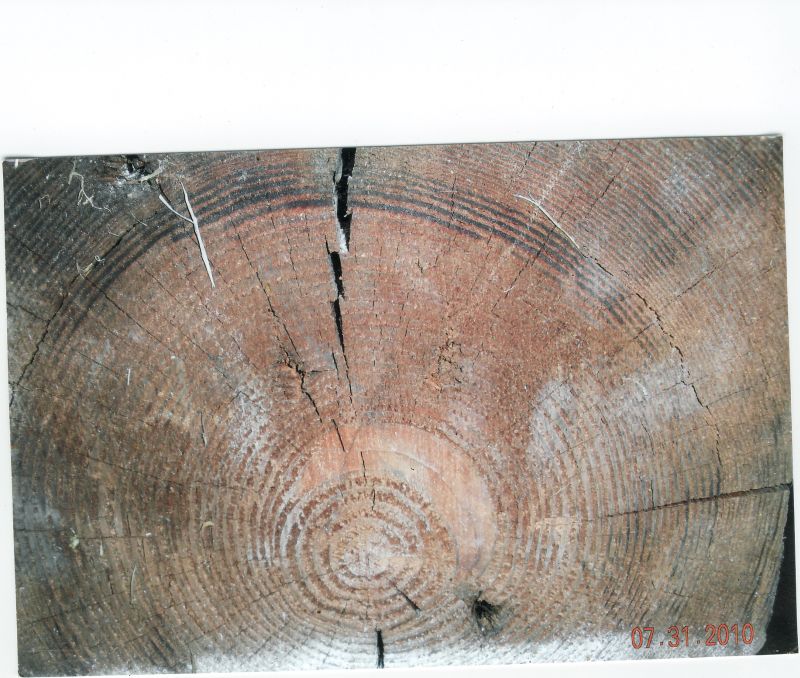Ring Deformation (Compression Wood)
An odd-looking ring pattern in a cross-cut log is explained as compression wood, certain to bend after sawing. April 20, 2011
Question
I am sawing up some pine beams and ran across a strange deformation in the rings. Anyone know what this might be? It runs the length of the 8' section I am sawing.

Click here for higher quality, full size image
Forum Responses
(Sawing and Drying Forum)
From contributor W:
The tree looks like it was bent over severely for a couple of years, then re-straightened by the hands of humans when it was very young. That does not look like any type of natural process that I am familiar with assuming that I am seeing what you intended to be seen in the photo.
From contributor B:
Looks to me like the tree had some damage to that spot when young, maybe from another tree falling along it and gouging the wood; at that point the tree would have been all sapwood, and could generate enough repair to seal itself up before any rot started in. Looks like it took two years, maybe three. The small blackish hole will probably lead to some defect, but I doubt it will be much.
From contributor S:
Looks like the blister caused by gall rust to me.
From Gene Wengert, forum technical advisor:
It looks like compression wood, which is a form of reaction wood. The tree is reacting to an outside force, such as a fallen tree.
From contributor A:
Compression wood. If you need rockers for a chair then q-saw that area and they will bend for you with no effort. Since you are cutting beams put that area in a corner. It will have less effect on the timber that way. My guess is that is in the bottom eight feet of the tree. I try not to use that portion of the tree in a timber or post unless it is very large.
From Gene Wengert, forum technical advisor:
Contributor A makes a very important point. Compression wood is so weak that it should never be used in a structural piece.
From the original questioner:
Thanks guys. That makes perfect sense. WOODWEB does it again! Love this place!
